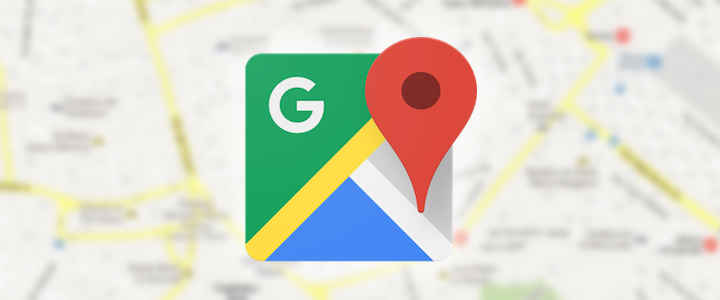5/5 (1) We all know about Google – how it started as a search engine and went on to become the tech giant it is today. And while Google Maps have been taking the world by storm with its detailed street views, and showcase of picturesque locations in real-time, only few know that Google Maps do not, in fact, map all of Earth. Fewer yet, know which regions/locations are omitted from view, and even fewer know why. Let’s change that, shall we?
Here are some of the locations that are blurred, blacked/whited out, or completely omitted on the Google Maps – Minami Torishima Airport (Japan), Volkel Airbase (Netherlands), Dugway Proving Ground (Utah), Pacific Northwest (USA), Roswell – New Mexico (USA), Garden of Gethsemane – Jerusalem (Israel), Narssarssuk – Arctic Circle (Greenland), Babylon (Iraq), North Korea, HAARP Site – Alaska (USA), the Poles. The list is long and dynamic.
Dynamic because Google claims some of the images we see on its maps are sourced from “third-party providers (that) are required to follow the law of the countries in which they operate, so some of them may blur images and then supply us with those images.” According to Google spokesperson, Deanna Yick, these images are later updated as and when they become available. Certain sites like the US Capitol Building and the Royal Residence of Netherlands that were previously blurred, are visible now and thus like this, the list of places ‘undercover’ keeps changing.
Though why are the above-mentioned places, instead of being only blurred, sometimes also blacked out or entirely omitted from Google Maps? For some locations, the reasons might be intuitive – like, safeguarding defense plans for the airbases of Japan in Minami and Netherlands in Volkel. After all, they must be doing something other airbases aren’t. Then there are The Poles that are not visible due to Google’s choice of mapping technology (a close variant of the Mercator Projection), though Google Earth (a separate programme) tries to cover for this.
But for other locations, the reasons are less obvious, and undoubtedly conspiracy theories run to fill these gaps in knowledge. For instance, the Michael Aaf Building on Dugway Proving Ground in Utah is rumoured (to have been occupied by the US military to test biological and chemical weapon systems. If that is true, they would definitely not want the world to see that. On the other hand, the Garden of Gethsemane in Jerusalem is simply not visible owing to the religious disputes over its true location.

But how does Google do this? Behind every Google Map is a much more complex map that is the key to search queries but remains hidden from view. This internal, deep map is built by Google in a project called ‘Ground Truth’. Alexis Madrigal, contributing editor to The Atlantic, calls it the secretive program to build the world’s best accurate maps. Until recently, no one was allowed to see how this project actually works. As Manik Gupta, senior project manager of Google, states, “If you look at the offline world – the real world in which we live, that information is not entirely online.” Google Maps, backed by Ground Truth, aim to bridge this gap between what we see in the real world and the virtual world (online).
According to Michael Weiss-Malik, one of the lead engineers behind Ground Truth, “there are a couple of steps. You acquire data through partners. You do a bunch of engineering on that data to get it into the right format and conflate it with other sources of data, and then you do a bunch of operations, which is what (Ground Truth) is about, to hand massage the data. And out the other end pops something that is higher quality than the sum of its parts.” And though Ground Truth might be the key to building better maps for Google and win the operating systems battle against Apple’s own Geo-data services, various locations are left off or simply not detailed on Google Maps.
This is attributed in part to Google’s own partialities. Jerry Brotton, historian of cartography and the author of ‘A History of the World in Twelve Maps’, believes Google Maps is driven by corporate goals of commercial profitability which are fulfilled largely by advertising revenue. It is not unknown that Google’s revenue is largely made up by advertising revenue, which amounted to 67.39 billion US dollars in 2015. As a result of this, Google ranks first among worldwide internet companies, with a market capitalization of 373 billion U.S. dollars, as of May, 2015.
In this light, Google’s business model can be looked at from both sides – the massive advertising revenue allows Google Maps to offer its services for free, and it is this near-monopoly the company achieves by providing free services that gives it the dominance necessary to generate advertising revenue. Google Maps undoubtedly spends a lot of money on developing Ground Truth and allied systems that support Google Maps, but this also affects what is put in and, more importantly, what is left off its maps.
Brotton argues that all maps are “of their time, of their place, and serve certain purposes.” For Google Maps, it is multinational profitability and is fuelled by the fact that the maps are being produced on the west coast of USA. James Wan, senior editor of Think Africa Press, wonders what would happen if Google’s data and programming ability were transferred to a Namibian company – the maps they would conjure up then would be different. They might prioritize Dulce Cafés over Starbucks, Pick ‘N Pays over Wal-Mart, and the panoramic views of African towns that are now only a blur on Google Maps. He says that makers of Google Maps look at the world through a very specific lens, and cyber-cartographers may not be filling in gaps on maps because may be “from 10,000 miles and a universe away, these gaps simply don’t exist.”
The omissions on Google Maps are also attributed to the map projection it is based on – a close variant of the Mercator Projection. Map aficionados and fellow cartographers categorize the Mercator projection as ‘bad’ since it misrepresents relative sizes across the globe and cannot even show the poles. On the other hand, geodesy folks think mapping services get the Mercator projection wrong as they have corrupted it by either using the wrong formulae or the wrong coordinate system for it. There are various map projections, but the wise thing to do is match the projection with the need. According to Daniel Strebe, a celebrity cartographer, in case of Google Maps the need is simple street maps that “do not deform according to the position within the frame or location on the earth’s surface.”
One way or another, Google Maps is the most widely used app after the communication suite (phone, text messages, e-mail, social networks). It is wondrous to think that one company decided to drive cars with custom cameras over every road it could access. Google would be easily over 5 million miles driven by now. And though it might be the first thing we think of when we feel lost on a new or old road, Google Maps does not map all of Earth just yet.




